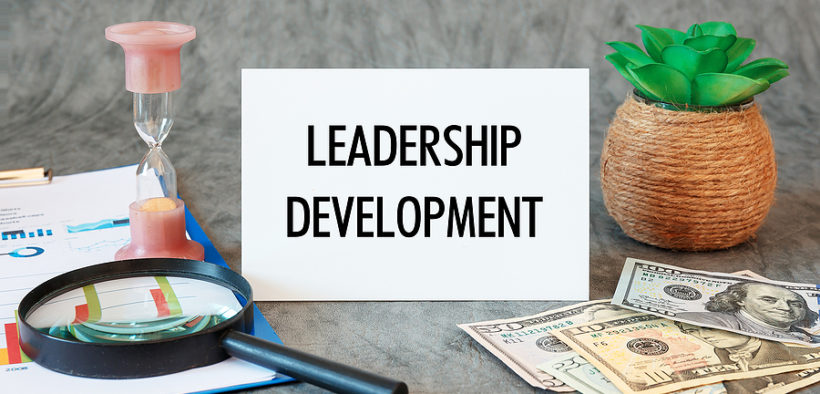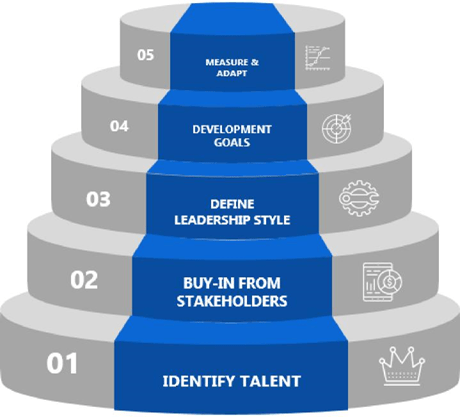Leadership Development Plan: Why and How to Create an Effective One?
Share

(Newscko) ─ A leadership development plan is vital for an organization. Probably the most crucial factor to drive leadership culture. Every 5-7 years, organizations look for a new set of leaders to lead, inspire, and guide others. And, seldom an external hire fulfills this need. Future leaders are not acquired but come from within. Thus, modern organizations use a leadership development plan to improve skills and competencies. This article will guide you to know everything about creating leadership development plans.
Contents:
- What is a leadership development plan?
- Why create a leadership development plan?
- Playbook to an effective leadership development plan
What is a leadership development plan?
It is a strategic tool an organization employs to upskill and hone its senior managers to become future-ready leaders. Generally, it is a long-term program that has a structured curriculum with clear learning outcomes.
Why create a leadership development plan?
Leaders play a vital role in the success of an organization. Also, they are the flag bearers to lead and motivate during times of crisis. Leadership programs ensure a continuous supply of leaders who can lead enterprises during the ebbs and flow of business. Furthermore, COVID has shown the importance of leaders navigating through uncertainties. Hence, developing a leadership development plan has become even more relevant.
Apart from this, you benefit from driving a culture of coaching and mentoring. Your organization flourishes when peers and managers coach each other. This creates strong relationship and leadership skills. And, this method is 1000x times more effective than any training or formal program in developing future leaders.
Playbook to an effective leadership development plan
The below steps can help your organization to create a leadership development plan template. And, this brings an established and proven method that can relate to any phase of business. Thus, creating purpose-driven values and beliefs—benefitting the organization over the long run. Refer to Figure 1.

1. Identify Talent
Whether formal or informal, identifying a talent pool that can become future leaders is the first step. Generally, potential candidates have a track record of solid performances and strong aspirations. You need to continuously look at those and provide them opportunities to become what you need. To begin with, you must deploy formal programs to earmark such talents. A few of the ways to identify talent with leadership potential within an organization are:
- Spot informal leaders—who think in a structured way and act logically.
- Look out for SMEs within a team who have extensive industry knowledge.
- Identify employees who love helping and mentoring others.
- Recognize staff who are self-motivated and take end-end accountability.
2. Buy-Ins from relevant stakeholders
For the success of a leadership plan, you must get acknowledgment from leaders, supervisors, and even the employees. Succession planning can not be an isolated activity, and all stakeholders must collaborate. For example, a leadership program would need to assign budgets and undertake extra projects. Also, it would need attending specialized training. Hence, you must get an agreement from relevant stakeholders about the plan’s objectives.
3. Define leadership style
Every organization has its own culture and style of doing business. And, this has to resonate with the leadership style of its top-of-the-ladder executives. Thereby creating a unique bonding of values and beliefs between the leaders and their companies. International Institute for Management Development mentions five categories of leadership types:
- Authoritarian Leadership
- Delegative Leadership
- Participative Leadership
- Transactional Leadership
- Transformational Leadership
It is imperative that you clarify which leadership style we must aim to develop among executives.
4. Leadership Development Goals
This step defines the aim of your leadership development plan. Here, you are trying to determine the strategy of
- ‘What to do,’
- ‘How to do,’ and
- ‘When to do.’
While defining the overarching goals, you must ensure that it follows SMART—
- Simple,
- Measurable,
- Achievable,
- Realistic, and
- Timely
We also have noticed that several organizations articulate their goals based on individual roles. This method, along with efficient prioritization and timed milestones, drives motivation among individuals.
5. Leadership Development Programs
Companies may rely on one or many initiatives. Usually, companies adopt the below-mentioned categories for leadership development programs:
- One-One Mentorship
- One-Many Mentorship
- External or In-house Training
- Secondary Assignments
- Specialized groups or committees
- Task Force for critical initiatives
- Volunteering
It is best to put in place a mix of these programs based on role, individual, and type of leadership KPIs.
6. Measure and Adapt
The most fundamental element to any successful planning is that it must be measurable and adaptable. Hence, there must be enough frameworks to measure an employee’s progress. Also, you can intervene (if required) to tweak or personalize the learning paths. Milestones and feedback loops ensure an incremental approach towards leadership development goals. Furthermore, quantification of success helps socialize the benefits in the entire organization.
In a Nutshell
Leaders drive performance. Now, this performance can be in the form of resilience and stability in times of adversity. Also, it can mean higher revenues or market share during the growth phase. Irrespective of the nature of business or phase of the market, organizations depend on a steady supply of leaders. Here, a sound leadership development plan ensures that leaders never become a scarcity. You can deploy leadership development programs and create future leaders at never imagined speed.








